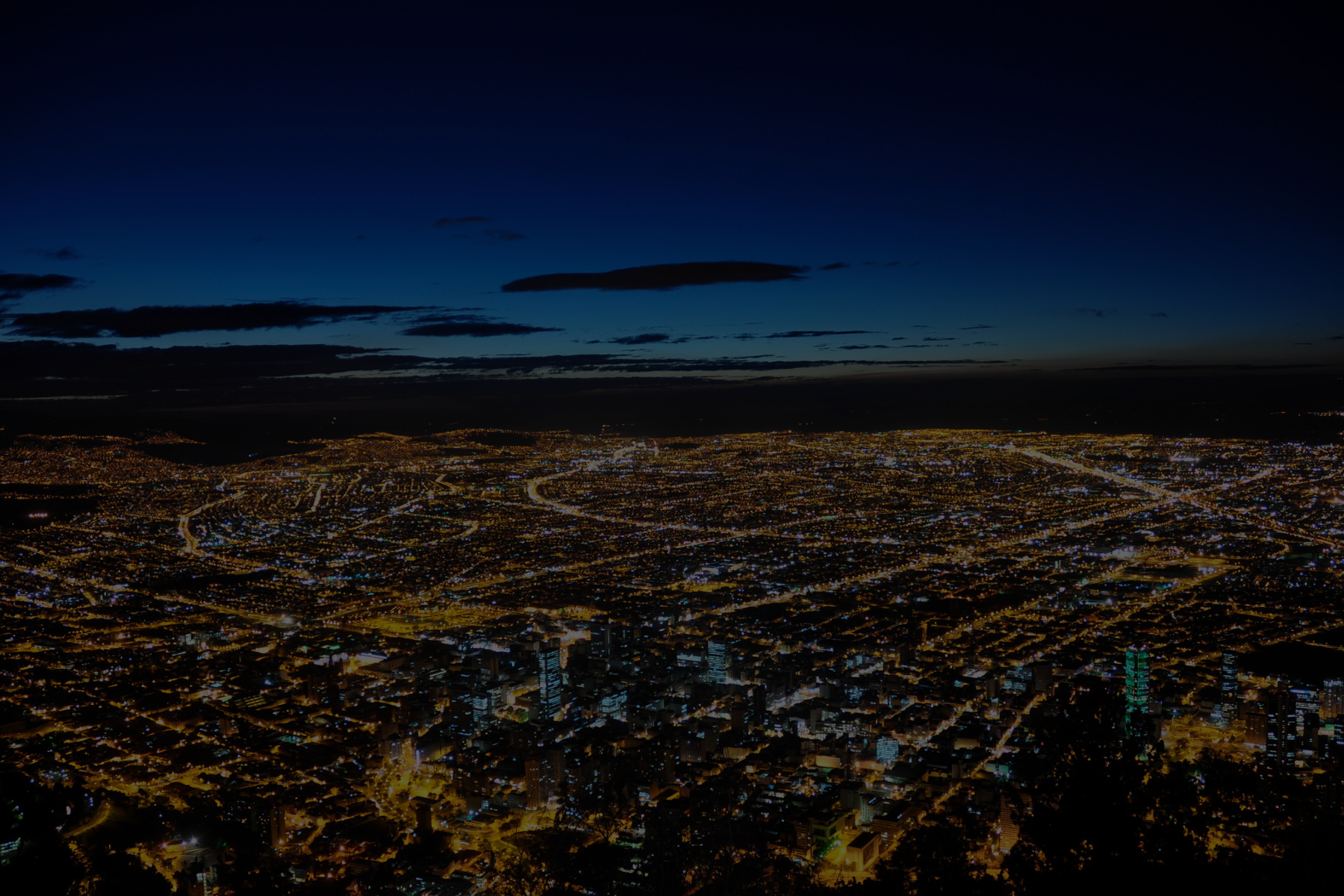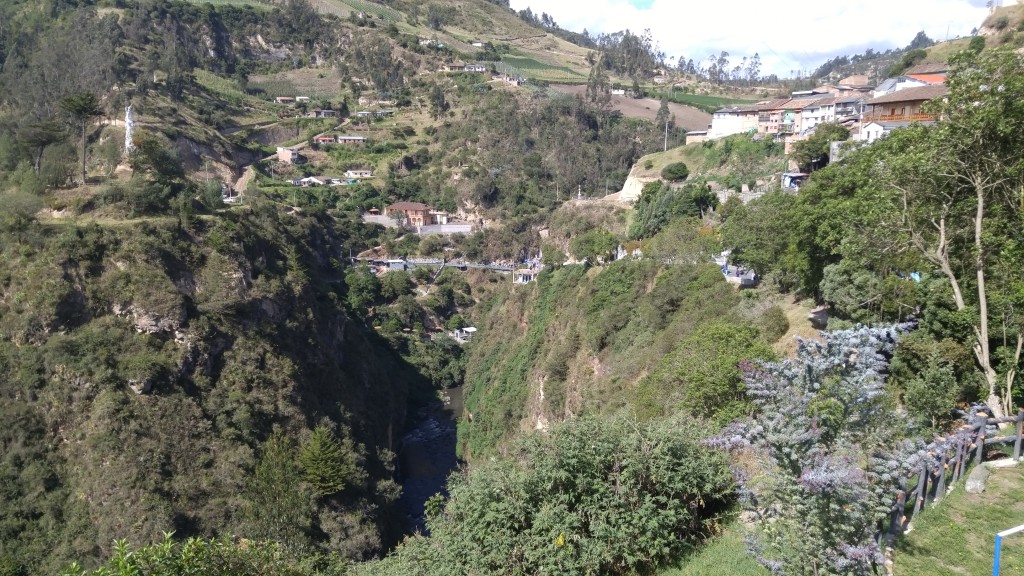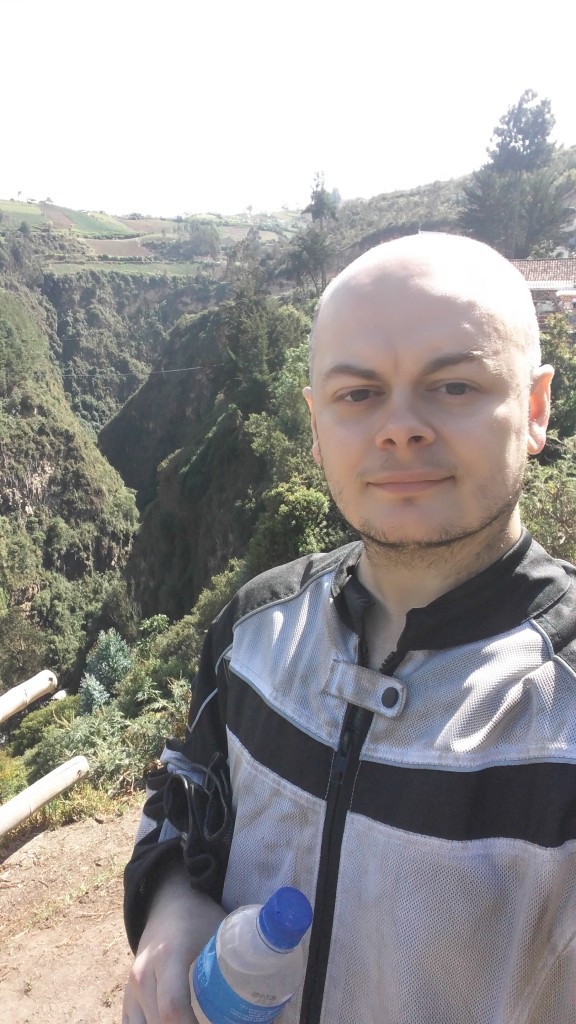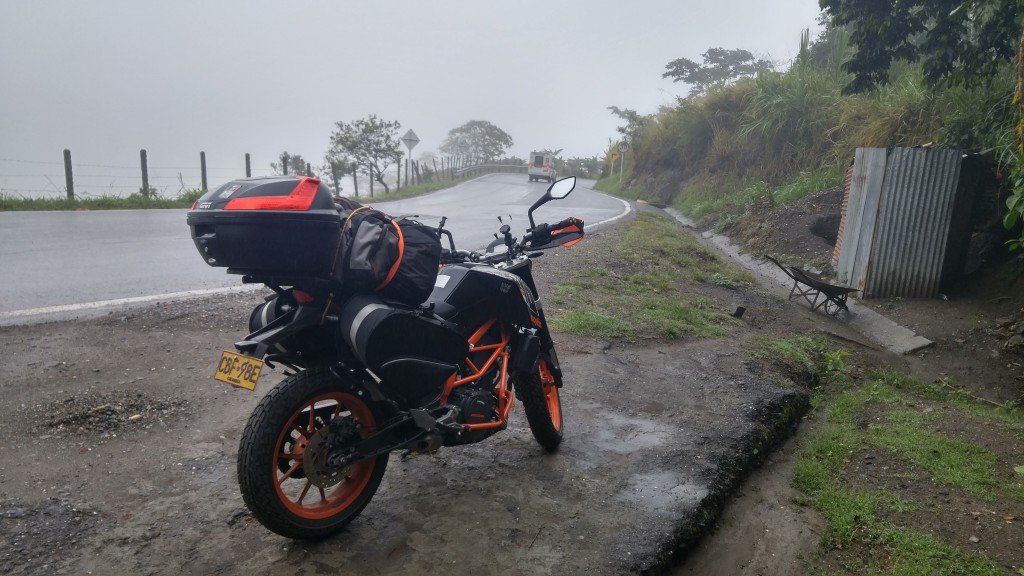I want to be sure that I don’t spend the entire trip writing about the trip, so I’ve taken the last several days off in order to focus on some other projects.
Currently, we’re in Quito, the capital of Ecuador. Getting here meant dealing with our first border crossing.
Nothing Beats Experience
Reading about something is a lot different than experiencing it. There are a lot of different aspects to this trip that we attempted to research but, for a variety of reasons, couldn’t get a definitive answer before arriving in South America.
One of those things is border crossings. Another one is buying a motorcycle, but that’s a post for another day.
All we had been able to find online was people saying things like, “Yeah, I bought a bike in Colombia and traveled to other South American countries, no problem.”
That leaves a lot to be desired when it comes to planning the logistics of your trip. We had no idea how long it would take, or what the process even looked like.
Elizabeth and I set out around 8am on February 27th from the city of Pasto. We made a quick stop at Santuario de Las Lajas, a Catholic church built during the first half of the 20th century. It was intended to be a quick stop, but as we walked down the trail toward the church we realized that it would take a good 20 minutes to get there, and then at least a 30 minute walk back. We were on sort of a tight schedule because we didn’t know how much time to allocate at the border, so we couldn’t take that much time for sightseeing.
Why were we in such a hurry? Good question. We had been told in Bogota that anyone can drive a vehicle in Colombia for 30 days without a special license. We were told that beyond 30 days, you’re required to take an official driving test (in Spanish), a physical exam, and a couple other things. If you’re caught driving without having all this taken care of, the police had the authority to confiscate your vehicle.
Because of this, the clock was ticking from the moment we landed in Colombia. Elizabeth had arrived in the country first without knowing about this 30 day limitation, so she had to leave before her 30 days were up. I was riding with her because it’s generally not a good idea for a woman to be traveling alone down here.
So, back to Santuario. We took a couple of pictures and hopped back on our bikes to head for the border.
On The Border
After about fifteen minutes of riding, we arrived at the border. There was a line of cars waiting to go to Ecuador, and we got in it. After a few minutes, the police waved us through, and…we were in Ecuador.
*record scratch*
Wait, wait, wait. It can’t be that easy. They didn’t do anything to our passports. No one even asked to look at them.
I pulled over and asked a policeman what we needed to do. He pointed to a nearby building that said Migracion and indicated that we should go there. Elizabeth and I turned around and drove to the building he had indicated.
How to Successfully Cross The Border
For the sake of people googling “How to cross the border into Ecuador with a motorcycle,” I’ll cut to the chase and talk about the right way to do a border crossing.
- On the Colombian side of the border, go to the Migracion building and get an exit stamp for your passport.
- Cross over to the Ecuadorian side of the border and enter their Migracion building.
- You’ll have to fill out a declaration form detailing how long you’ll be in Ecuador, your passport number, and a few other things. Stand in a line, and give your paper to the official behind the fancy bulletproof glass. They’ll give you an entry stamp to Ecuador.
- Now, go to a window that says Importaciones.
- Give all your paperwork for your bike (Colombian Transit Permit, SOAT, etc), your passport, and any drivers licenses you have on you to the clerk at the window. Tell them you have a motorcycle that you need to import. (“Estoy en un viaje motocicleta y necesito importar mi moto”)
- The clerk will process your paperwork and hand you a form to sign that says you’re abiding by all relevant Ecuadorian import laws.
- You’re done! Go enjoy Ecuador.
How to Spend Two Hours Trying to Cross the Border
Elizabeth and I did everything above, but we did it in the wrong order.
After we had parked, I asked two policemen standing outside the building what we needed to do. I told them that we had motorcycles and needed to enter Ecuador. The pointed to the “Importaciones” window and indicated we should go there.
Elizabeth and I walked over and stood in line. There was one woman in front of us. When it looked like she was done, another woman swooped in. She kind of looked like she had been there before, and had to come back for some reason. Then when this new woman was done, the original woman came back. We stood there for at least 30 minutes waiting for our turn.
Finally, it was our turn at the window. I handed my information to the clerk, and he looked at everything for about five minutes. He finally handed it back and said that while we were at the right window, we had to get our entry stamp into Ecuador first.
This entailed going to the huge line that had grown while we waited for our turn at the Importaciones window. We debated whether or not to leave our biked unattended, but finally decided that they would be okay. There was a security guard nearby, and I felt confident that he’d keep people from stealing our bikes or our luggage.
After about 20 minutes we got into the building. After another 20 minutes we made it to the front of the line. We walked up to our respective clerks, and we each found out that since we didn’t have an exit stamp for Colombia, we couldn’t get an entry stamp for Ecuador. At this point both of us were pretty frustrated.
We walked across the footbridge to the Colombian side of the border and entered the Migracion building.
There was a short line for exit stamps, so we got in that line and after a moment our passports were stamped. We saw a window on the Colombian side that said Importaciones, so we walked over to ask if we needed anything from the Colombian side to import our bike into Ecuador. The clerk we talked to said that we didn’t, so, passports in hand, we walked back into Ecuador.
Fortunately we didn’t have to wait in line again. We were able to walk back up to the front and give the clerks our passports, now complete with Colombian exit stamps.
Then, at long last, we got back in line at the Importaciones window, where the original woman we had been waiting behind was there again.
So we waited. Again. Because that’s the moral of this story. There is going to be LOTS OF WAITING IN LINE when you deal with bureaucracy.
Finally, I got up to the front and handed the clerk my paperwork again. This time, everything was in order except for my International Drivers License from AAA. It turns out that the person at AAA who filled out my IDL neglected to write down a date that my license was effective. They also neglected to mark down that I have a motorcycle endorsement…but the blank date really threw the clerk off. In the end, though, he goes “No es importa”, or “It’s not important,” and gave me a declaration to sign.
That reminds me. I should check the declaration I’ve signed to see if I’m actually abiding by what it says.
ANYWAY…I was finally, legally in Ecuador. I decided to find a vendor to exchange my Colombian pesos for American dollars. That’s right, Ecuador uses the dollar for its currency! Elizabeth handed me her pesos and I set out to find someone to exchange money with.
Currency Conversion Confusion
I crossed the street and saw a small store that advertised “CAMBIO,” or change. I went inside and spoke with the woman about getting my money converted. I asked for her exchange rate, and it was similar to what I had looked up online, so I decided to proceed.
I was exchanging 100,000 pesos of my own, and Elizabeth had given me 37,000 pesos to convert for her. The vendor gave me $15 for my 100,000 pesos…and then gave me $15 for Elizabeth’s 37,000 pesos.
I was pretty confused. I asked to see the exchange rate again that she was using, and found out that I should have gotten somewhere in the neighborhood of $30, not $15. The amount she had given me for Elizabeth was correct, but she had only given me half of what I was owed. I then spent a very painful 15 minutes trying to explain what the problem was. I simply didn’t have the Spanish vocabulary to say what I was trying to say.
To the exchange lady’s credit, as soon as she realized what I was telling her, she swiftly pulled out the remaining money she owed me. She wasn’t trying to take advantage of me; it was just an honest mistake. Money in hand, I walked back to where Elizabeth was and we hopped on our bikes to resume our trip.
Police Checkpoint
After 5 minutes or so of driving, we ran into a police checkpoint. The cop signaled for Elizabeth to pull over, and when they noticed that I was with her, they signaled for me to pull over, too.
Elizabeth’s cop did a cursory inspection, but my guy was intent on searching EVERYTHING. I had to pull out my backpack, and he searched through every single part of it. He then made me unstrap my heavier bag, and he searched through all of the compartments in that, too.
This is what my bike looks like when my stuff is fully loaded up. My backpack is in the trunk area, and the big bag is secured behind where I sit. I had two bungie cords on each side of my big bag, and a big orange ratchet tie-down providing more support as well. I had to undo all of it.
After searching through my bags, he found zero drugs or other contraband, and gave me the okay to re-load my motorcycle. It took about ten minutes. I was a little annoyed, but I know that he was only doing his job.
No Gas
Back on the road at last, we passed through a toll booth and my low fuel light came on. I signaled to Elizabeth that I needed gas, and we pulled over at the next gas station we saw. Unfortunately, the gas station only had diesel and our motorcycles require gasoline.
So on we went. After five minutes, we found another gas station. The attendant looked at our plates and said he didn’t have any gasoline, but there was another gas station 15 minutes away that could help us.
Fifteen more minutes pass, and we find the gas station. They have gasoline! But they, too, looked at our license plates. They said they could only sell us one dollar’s worth of gasoline. We asked why, and they told us that it was the law. There was a gas station 45 minutes away that we could get gas at.
I was getting a little frustrated with the “We can’t help you, but there’s another gas station that can” routine, so I tried to ask the attendants for more information. Unfortunately, they had a huge influx of customers and couldn’t really take the time to talk to me with my terrible Spanish. The male attendant was rather patient, but the female attendant got pretty upset with my persistence. I eventually gave up. We got back on our bikes and rode as far as we could.
Fortunately, $1 worth of gas was able to get us to the city of Ibarra, where we were able to fill up our gas tanks with gas. At this gas station, I asked the attendant about the gas situation. She said that the President of Ecuador had passed a law saying that the provinces that bordered Colombia are forbidden to sell gas to anyone with a license plate from Colombia. Since we purchased our bikes in Colombia, we were subject to the consequences of that law even though we were just passing through.
After filling up with gas and getting some delicious soup, we got back on the road and drove to Quito.
Aside from the problems I’ve covered in this post, the trip was pretty fun. We were able to see some really breathtaking views and traffic was relatively light.
Josh wound up driving to Quito the next day. He benefited from our experience and didn’t make the same mistakes that Elizabeth and I did.
We’ve been in Quito for about a week now. I should be writing about our experiences here fairly soon.



